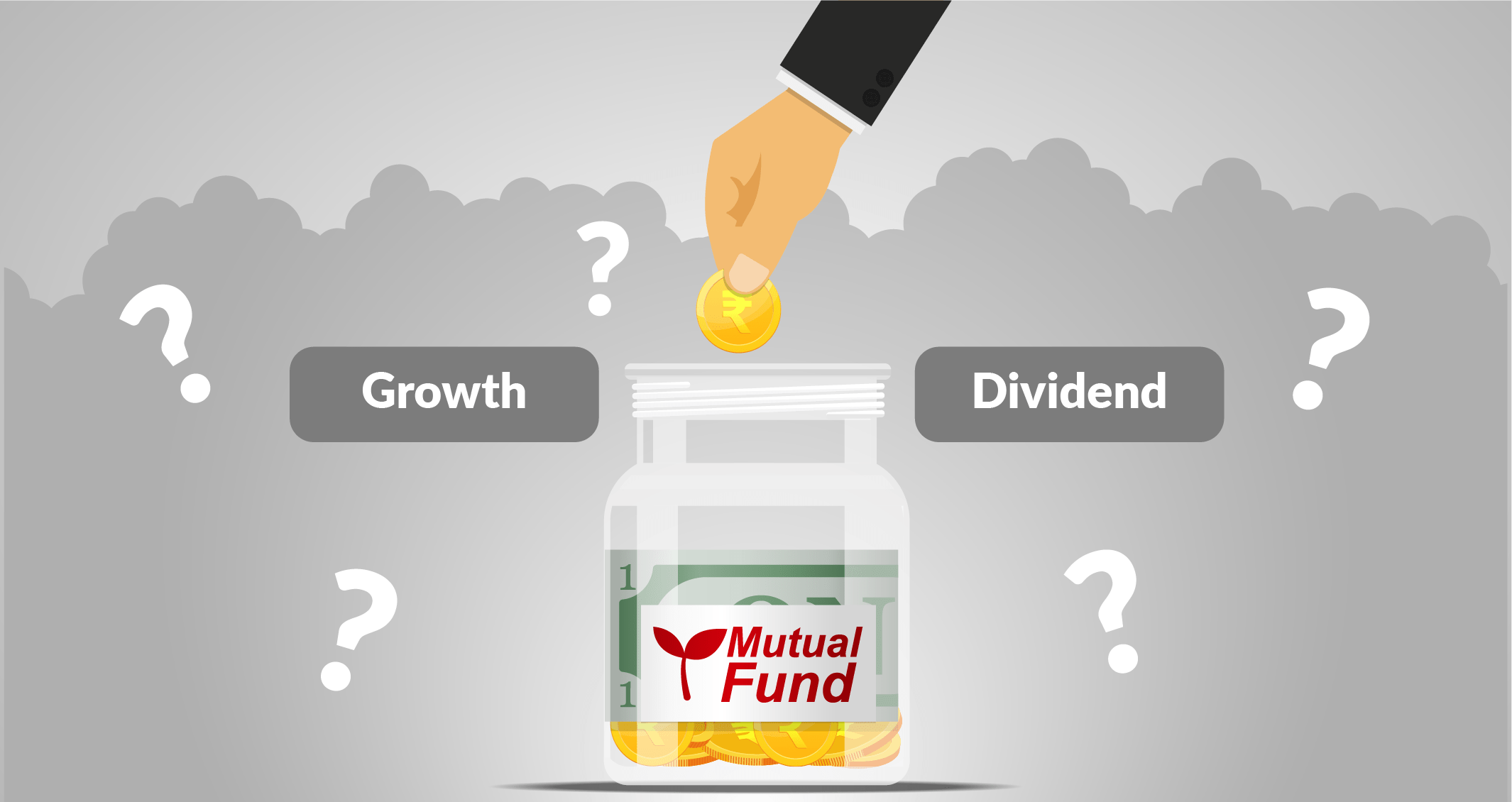Mutual Funds You Should Opt for: Growth vs. Dividend

“Hey, you! Still got your savings lying around in a mediocre savings account? Then, it’s high time you begin investing!”
“Come on over! Why save for silver years? It’s the golden hour!” – Team Gold
“Pish posh! Getting a roof over your head is more important – purchase your first property!” – Team Real Estate
“Not today, Real Estate! We offer the most secure investment route with moderate returns” – Team Fixed Deposit
“Wait a min-” Team Cryptocurrency
“NO!” – Other teams
Well, there you have it. The moment you announce any intentions to start investing, people badger you with information about investment avenues. They give you personal accounts of their experience with investing, the pitfalls they encountered and the benefits reaped. Regardless, these experiences are limited to them. Though those lessons may come in handy – don’t disregard those!
That said, people’s prejudices might cloud your judgement. Like cryptocurrency, those unaware of the topic or how to operate this digital currency are reluctant to explore it. With the Indian government still pondering its faith within the country, you can skip out on this until there’s more information available.
In the chaos of introductions, here’s a team you didn’t get to meet: Mutual Funds! They’re a modern means of investment, letting you and other investors pool in money and watch it multiply.
Mutual Funds: Investor Profile
These types of investments cater to a large group of risk appetites. Mutual funds can provide decent returns to those with very low-risk appetites and very high returns to those with corresponding risk appetites. Unlike some investment options, they allow you to begin investing as low as ₹100 through SIPs. These monthly instalments will invest into funds with risk levels of your choice for a certain period, and in the end, you can reap generous returns.
To understand your investor profile and risk appetite, note your financial goals. Create a timeline within which you would like to achieve them and put them in order of priority or sequence of your choice. It will help you understand the duration between your current financial condition and your upcoming goal. Based on this, you can begin investing in funds that fulfil these needs.
In fact, you can set the tenure or duration that it matures right in time for those financial obligations. It could be for your marriage or child’s education. Or, perhaps, retirement!
However, there’s a question that will decide the trajectory of your wealth creation journey – should you invest in growth or dividend funds? Let’s learn more about them!
Fund Comparison: Growth Vs Dividend
1. Growth Funds
This fund generates profits by re-investing in the same scheme instead of paying out the earnings to the investors. Since the profits are re-invested, the investors earn a profit on profit. Incidentally, it gives them the benefit of compounding. Moreover, the growth option doesn’t require regular cash flow since it procures its investments from the profits generated.
Who is it for?: It’s a high-risk investment instrument that requires an equally aggressive risk seeker. Individuals close to retirement or with delicate finances should avoid investing in it. Younger investors with a long-term investment tenure can invest in these funds. Growth funds have the potential to deliver high returns over the course of 5-10 years at least.
While you exit the fund early, it may come with an exit load. The only returns earned will be from the sale of the funds, leaving the profit as the surplus selling price over the purchase price. So, unless this option suits your investor profile, it’s inadvisable to pursue investing in it.
2. Dividend Funds
In the case of dividend funds, the profits made by the scheme are distributed between investors as dividends. They may be paid out on a quarterly, half-yearly or annual basis. Though, these funds don’t guarantee the profits or the interval between dividend payouts.
It’s up to the fund manager to declare the dividends each time the scheme makes a profit. Then the dividends are paid by redeeming units of the scheme.
Example: If you invest ₹10 in an equity-based fund and the NAV increases to ₹15. Here, the fund manager will declare a dividend of ₹2. Post payout, the NAV of the fund drops to ₹13.
Who is it for?: The dividend option is entirely reliant on fluctuations. If the market is at a high, your investments will reap high returns. So, this option is viable for those dependant on these investments for a regular income. In the long term, you could get high returns, but there’s a fair bit of waiting as the NAV of the fund rises higher.
The Verdict?
As with most things, it’s up to you! There’s no clear-cut answer to choose between the two. It entirely depends on your financial conditions and goals. So, analyse these situations and decide whether you want to invest in growth or dividend funds.
Wait, have you already invested in either one? If you’re looking to make the switch, it entails selling old units and purchasing new ones from the option you desire. While it may attract some exit loads with TDS on gains, it may be well worth the trouble to align investments to your financial goals.
If you want to explore these funds, hop over to Bajaj MARKETS! We have a range of low to high-risk catering mutual funds that can help fulfil your financial goals.
Blog Categories
Enter Your OTP



